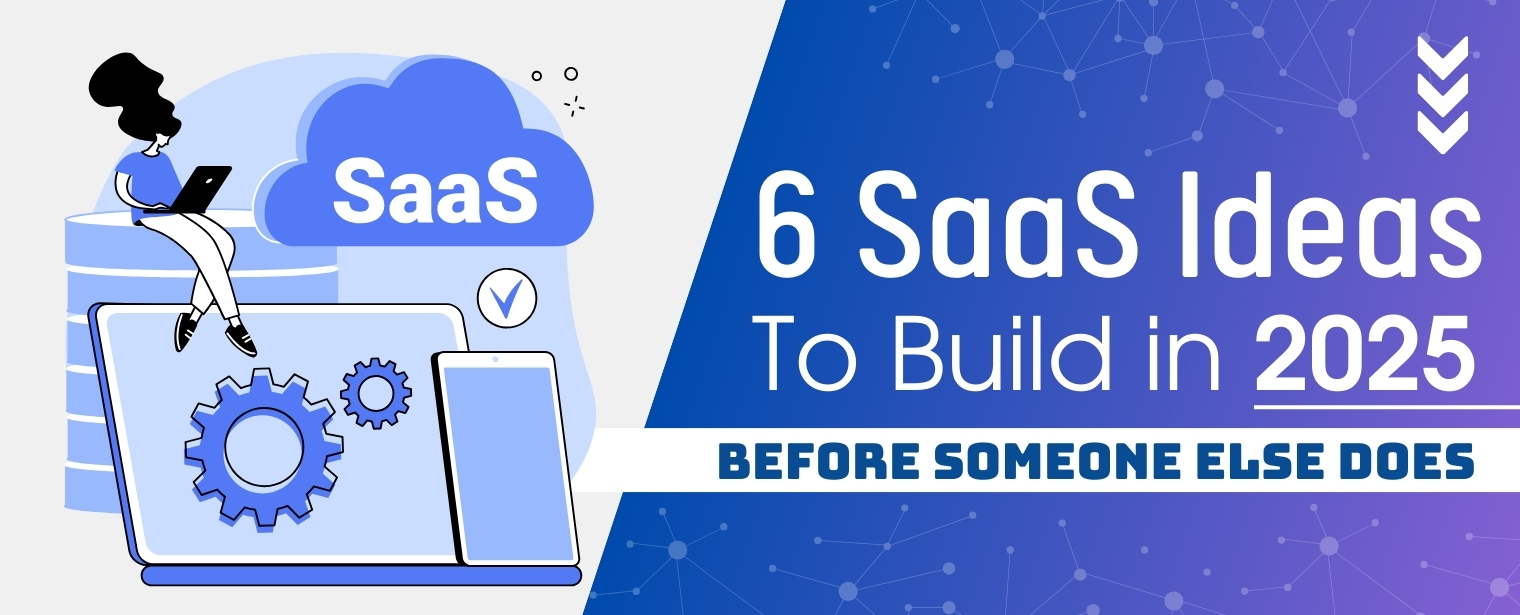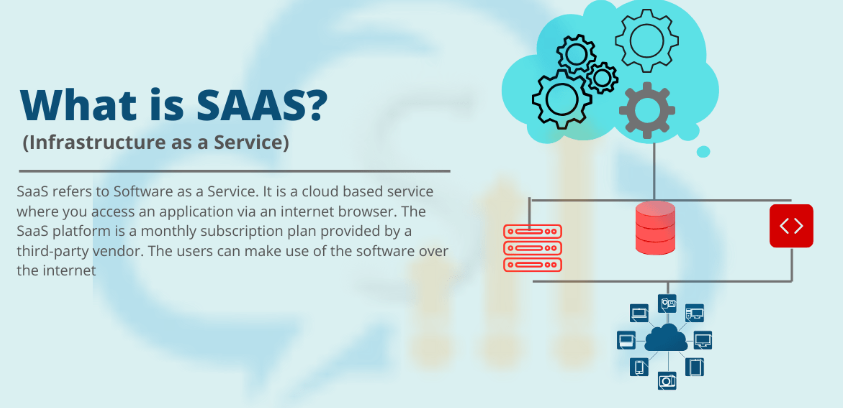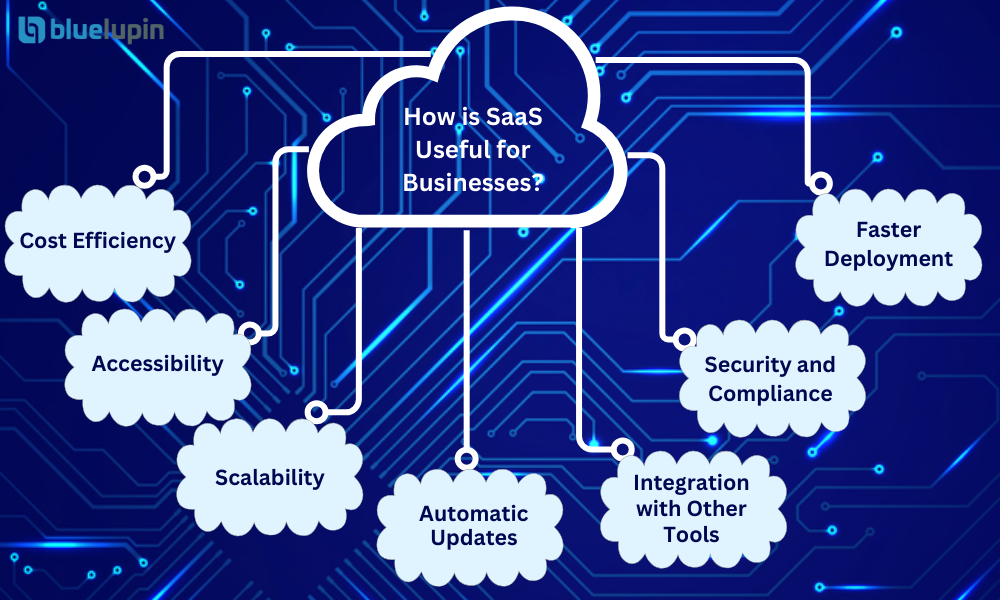6 SaaS Ideas to Build in 2025 Before Someone Else Does

Introduction
The SaaS industry is growing rapidly, offering businesses cloud-based solutions that improve efficiency and reduce costs. Companies of all sizes are shifting to SaaS platforms to streamline operations, automate tasks, and enhance scalability. However, with increasing competition, launching a successful SaaS business requires a strategic approach, identifying gaps in the market and creating tailored solutions.
In this blog, we have mentioned and broke down six high-potential SaaS ideas for 2025, each designed to solve real business challenges. Whether you are an entrepreneur or a developer, these ideas can help you build a profitable SaaS product before someone else capitalizes on the opportunity.
What is SaaS?

SaaS (Software-as-a-Service) is a cloud computing model where software applications are hosted on remote servers and delivered to users via the internet. Unlike traditional software that requires installation on local devices, SaaS operates entirely in the cloud, allowing users to access applications from any device with an internet connection. It utilizes a multi-tenant architecture, meaning multiple users share a single instance of the software while maintaining data isolation.
SaaS providers handle security, updates, and infrastructure, eliminating the need for businesses to manage in-house IT resources. Common SaaS applications include CRM systems, project management tools, and accounting software. SaaS solutions use APIs to integrate with other platforms, ensuring seamless data exchange and workflow automation for businesses of all sizes.
How is SaaS Useful for Businesses?

SaaS provides businesses with a cost-effective and scalable way to access software without the need for on-premise infrastructure.
In addition to the operational benefits, businesses must also consider the legal implications, especially for Indian SaaS companies serving international clients, where compliance with global regulations is crucial.
Here’s why it is beneficial:
Cost Efficiency: Eliminates upfront hardware and software costs, as businesses pay on a subscription basis.
Accessibility: Cloud-based applications can be accessed from anywhere, enabling remote work and global collaboration.
Scalability: Businesses can easily scale up or down based on usage, avoiding the limitations of traditional software.
Automatic Updates: SaaS providers handle updates and security patches, ensuring businesses always have the latest version.
Integration with Other Tools: Many SaaS applications offer APIs to connect with CRMs, ERPs, and other software, streamlining operations.
Security and Compliance: SaaS vendors invest in high-level security measures, data encryption, and compliance with industry regulations.
Faster Deployment: Unlike traditional software, which requires installation, SaaS applications are ready to use immediately after setup.
Current Trends in SaaS
The SaaS industry is evolving with new innovations shaping how businesses operate. Here are the key trends driving SaaS growth in 2025:
AI and Automation: SaaS platforms are integrating AI for predictive analytics, chatbots, and process automation to improve efficiency.
Vertical SaaS: Industry-specific SaaS solutions (e.g., healthcare, fintech, logistics) are gaining traction as businesses demand tailored software.
Low-Code and No-Code Platforms: More businesses are using no-code SaaS tools to build applications without extensive programming knowledge.
Micro-SaaS Startups: Small, highly specialized SaaS products are emerging, focusing on niche markets with unique needs.
Blockchain Integration: SaaS platforms are adopting blockchain for secure transactions, data transparency, and fraud prevention.
Data Privacy and Security Compliance: With stricter regulations (GDPR, CCPA), SaaS providers are enhancing data security and compliance measures.
Subscription and Usage-Based Pricing: Flexible, pay-as-you-go pricing models are becoming popular, allowing businesses to pay only for what they use.
Collaboration and Remote Work Tools: The demand for SaaS-based project management, video conferencing, and document-sharing tools continues to grow.
6 SaaS Ideas to Build in 2025 Before Someone Else Does
SaaS businesses are growing rapidly, and finding niche opportunities can help startups stand out in the crowded software market. The following six SaaS ideas solve real-world problems in specific industries, providing automation, efficiency, and better business management. Here’s how these ideas work, their value proposition, and their revenue potential.
1. Inventory Management for Custom Apparel Businesses
The Problem
Small apparel businesses struggle to keep track of inventory, especially when dealing with custom-made orders. Their challenges include:
- Managing blank apparel like t-shirts, hoodies, and hats.
- Integrating with Shopify or other e-commerce platforms to track fabric and materials used in production.
- Assigning barcodes and SKUs to unique, event-based sales items.
- Handling work-in-progress inventory like dyed fabrics waiting for embroidery.
- Most existing solutions are expensive or lack key features tailored to small custom apparel businesses.
How It Works
A cloud-based inventory management system designed for small apparel businesses will:
- Sync with Shopify and similar platforms to track stock levels in real-time.
- Automate SKU and barcode generation for each custom product.
- Offer a dashboard with insights into raw material usage and projected shortages.
- Allow work-in-progress tracking, ensuring businesses know which items are awaiting further processing.
Why It Creates Value
This SaaS solution reduces inventory errors, minimizes waste, and improves production efficiency. Business owners can track orders accurately, avoid overstocking, and improve cash flow management.
Pricing Model
- Starter Plan ($50/month): Basic inventory tracking.
- Growth Plan ($100/month): Shopify integration, SKU automation.
- Pro Plan ($250/month): Advanced analytics and demand forecasting.
2. Ticketing System Integration for Managed Service Providers (MSPs)
The Problem
MSPs manage multiple ticketing systems like Freshservice and ServiceNow. Without integrations, they face:
- Formatting issues in email-based tickets.
- Endless auto-reply loops from different ticketing systems.
- Manual work merging duplicate tickets.
- Frequent breakdowns in custom-built integrations.
How It Works
- A centralized SaaS ticketing solution would:
- Parse emails to standardize ticket formatting.
- Prevent auto-reply loops by identifying duplicate ticket responses.
- Merge and assign tickets based on predefined automation rules.
- Provide direct API integrations with major ticketing platforms.
Why It Creates Value
This automation reduces manual effort, improving response time and customer satisfaction. MSPs can optimize their workflow, allowing teams to focus on resolving issues instead of managing tickets.
Pricing Model
- Basic Plan ($200/month): Email parsing and automation.
- Professional Plan ($350/month): API integrations.
- Enterprise Plan ($500/month): AI-driven ticket routing and automation.
3. ERP for Small Manufacturing Facilities
The Problem
Small manufacturers still rely on spreadsheets and outdated software, leading to:
- Poor traceability of raw materials.
- Inefficient scheduling of work orders.
- Errors in cost calculations due to scrap and waste.
- No software-based security for business data.
How It Works
A cloud-based ERP system for small manufacturers would:
- Automate raw material tracking and alert managers when stock is low.
- Schedule work orders based on production priorities and deadlines.
- Provide real-time cost analysis, factoring in yield loss and overhead.
- Implement user permissions to prevent unauthorized data access.
Why It Creates Value
This solution streamlines operations, reduces waste, and improves productivity. Small manufacturers can make data-driven decisions to optimize costs and scale efficiently.
Pricing Model
- Basic Plan ($10,000/year): Core ERP features.
- Growth Plan ($20,000/year): AI-powered automation and workflow optimization.
- Premium Plan ($35,000/year): Compliance tracking, premium customer support.
4. Client Portal for Retail Businesses
The Problem
Retail businesses selling custom products or services lack an efficient way to manage client interactions. Their pain points include:
- No centralized platform for customer order tracking.
- Manual approval processes for invoices and contracts.
- Lack of secure file-sharing options.
How It Works
A SaaS-based client portal would:
- Provide branded customer dashboards with order tracking.
- Automate contract approvals and invoice generation.
- Enable secure file sharing for project-based businesses.
- Integrate with third-party cloud storage services like Dropbox.
Why It Creates Value
Retail businesses will save time, reduce errors, and enhance customer satisfaction by offering self-service order tracking.
Pricing Model
- Starter Plan ($50/month): Order tracking and workflow automation.
- Professional Plan ($100/month): Invoicing and contract approvals.
- Enterprise Plan ($200/month): Advanced analytics and third-party integrations.
5. Simple Media Asset Management for Solo Content Creators
The Problem
Content creators waste time searching for media files due to:
- Poor file organization.
- Subscription-based asset management tools they can’t afford.
- Lack of offline access to stored content.
How It Works
- A user-friendly media asset management tool would:
- Allow quick tagging and searching of media files.
- Support external hard drive storage without requiring an internet connection.
- Offer a one-time purchase option instead of monthly subscriptions.
Why It Creates Value
Content creators save time and money while improving their workflow efficiency.
Pricing Model
- One-time purchase ($99): Basic tagging and storage.
- Premium Upgrade ($199): Advanced metadata search, cloud sync.
- Enterprise License ($499): Multi-user support for teams.
6. Museum Cataloging App for Small Historical Societies
The Problem
Small museums and historical societies struggle with outdated cataloging software, making it difficult to:
- Record and categorize artifacts efficiently.
- Access catalogs on mobile devices.
- Generate reports for funding and compliance.
How It Works
- A cloud-based museum cataloging app would:
- Allow museum staff to catalog items using mobile devices.
- Store high-resolution images and metadata in an organized database.
- Enable easy export of records for reporting and grant applications.
Why It Creates Value
This solution reduces manual paperwork, increases efficiency, and makes artifact management easier for small historical societies with limited budgets.
Pricing Model
- Basic Plan ($30/month): Simple data entry and reporting.
- Professional Plan ($75/month): Cloud storage and batch editing.
- Enterprise Plan ($150/month): API integrations and multi-user access.
FAQs
1. How do I choose the best SaaS idea to develop in 2025?
Choosing the right SaaS idea depends on market demand, competition, and technical feasibility. Start by identifying a niche with real problems that lack affordable or effective solutions. Conduct market research by joining industry forums, reading customer reviews of existing software, and talking to potential users. Validate your idea with a minimum viable product (MVP) and test demand before investing heavily. Additionally, focus on scalability and long-term revenue potential while ensuring the solution provides significant value.
2. How do I validate if a SaaS business idea will be successful?
Validation is crucial before developing a full-fledged SaaS product. Start by researching industry-specific pain points through social media groups, Reddit threads, and direct interviews with potential users. Build a basic prototype or landing page describing your solution and collect email signups to measure interest. Offer a pre-launch beta version to early adopters and collect feedback. Monitor engagement, willingness to pay, and feature requests to refine your SaaS offering before scaling.
3. What are the biggest challenges in launching a SaaS product?
Launching a SaaS business comes with several challenges, including high initial development costs, user acquisition, and retention. One major hurdle is ensuring that the product solves a real problem effectively while differentiating itself from competitors. Other challenges include pricing the software correctly, handling security and compliance requirements, and maintaining a reliable infrastructure. Additionally, customer support and onboarding must be seamless to reduce churn and increase user satisfaction, making continuous improvements based on feedback essential.
4. How do I market a new SaaS product to attract customers?
Marketing a SaaS product requires a mix of content marketing, SEO, paid ads, and community engagement. Start by building a strong online presence with a blog offering valuable insights related to your SaaS niche. Leverage email marketing, LinkedIn outreach, and targeted ads to generate leads. Offer free trials or freemium models to attract users. Partner with influencers, industry bloggers, and YouTube creators to expand reach. Lastly, focus on customer referrals and case studies to build credibility and trust in your product.
Conclusion
The SaaS industry is filled with opportunities, and businesses are looking for specialized solutions that solve real-world problems. These six ideas cater to niche markets where existing solutions are either too expensive or insufficient. Entrepreneurs who build software addressing these needs have the potential to create a profitable SaaS business before competition catches up.
If you are considering launching a SaaS product in 2025, start by validating your idea, building an MVP, and refining features based on customer feedback. The earlier you enter these markets, the better your chances of success will be.

